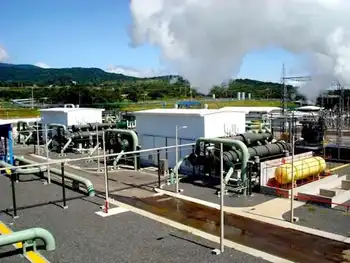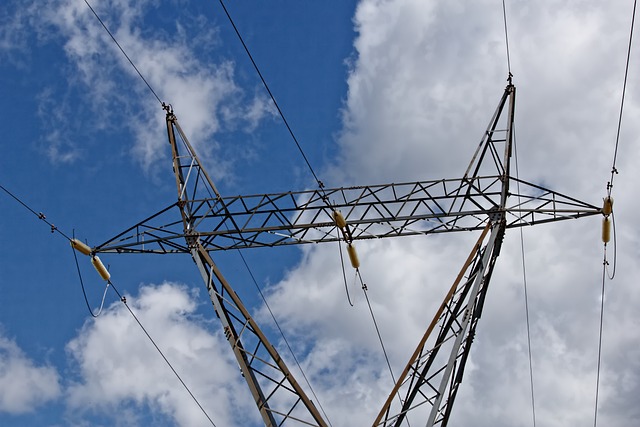PickensÂ’ pullback shows a shift in the wind
The economy has changed drastically since the tycoon last year called for the United States to cut back on its oil imports in the face of record-high prices and said he planned to invest $10 billion in wind power.
With credit costlier and harder to come by, and oil and natural gas prices down sharply over the past year, the nation's nascent wind industry may begin to focus on smaller projects that are closer to major population centers rather than massive developments like 81-year-old Pickens envisioned, industry officials said.
"You've got an industry that is kind of hanging on by its fingernails," said Denise Bode, chief executive of the American Wind Energy Association.
Developers last year invested $17 billion in new U.S. wind capacity, according to the AWEA, enough to generate 8,545 megawatts of electricity, which has the potential to meet the needs of 6.8 million typical American homes.
The group estimated that at least 5,000 megawatts of new wind capacity would be built this year, meaning the amount of new wind development in the United States could decline for the first time since 2004, when the expiration of a tax credit caused a sharp drop in the number of new turbines installed.
Construction has ground to a near halt as developers wait for the Obama administration — which has said green jobs and alternative energy will be a key part of its $787 billion stimulus package — to deliver on promises that include allowing companies who build wind farms to collect tax credits quickly, Bode said.
The industry is also hoping for a national renewable energy standard and more focus on building transmission lines to connect the isolated Southwestern communities where many wind farms are being built to major population centers where power is needed.
Pickens, who spent about $58 million promoting his "Pickens Plan" on television and in newspapers last year, said both troubles in the credit market and access to transmission lines would push back his plans in wind.
"The capital markets have dealt us all a setback and I'm less aggressive with the Panhandle project than I have been," Pickens said in a statement. "Transmission issues and the problem with the capital markets make that unfeasible at this point."
He still expects to develop the wind farm eventually, and said he would take delivery of the 667 electricity-producing General Electric Co wind turbines he had ordered. He aims to use those turbines in smaller projects.
Some in the industry argue that the easiest way to overcome the transmission challenge is to locate wind farms closer to major population centers — namely, along the coasts.
"If you look at the 28 coastal states, they consume over 73 percent of the electricity in the United States," said Jim Gordon, president of Cape Wind, which plans to build a $1 billion, 130-turbine wind farm off the coast of Massachusetts' Cape Cod resort area, near Boston.
"We have this vast offshore wind resource right next to these coastal states," Gordon said. "If you're building a wind farm in Texas and then investing in the billions of dollars of transmission line to bring it to the East Coast.... It just seems to me to make more sense to harness the offshore wind right next to these big demand centers."
Pickens's move also reflects a drop in U.S. demand for electricity due to the recession.
"Electricity demand is down generally so in addition to his reconsidering the pace of his plans, you are also seeing slowdowns in the deployment of technology for generation whether it's (natural) gas, coal or nuclear," said Christine Tezak, an analyst at Robert W. Baird and Co.
A key question facing the industry is how much focus will remain on developing alternative energy sources now that conventional energy prices have eased from last year's record highs. When Pickens unveiled his plan last year, he predicted oil would never again trade for less than $100 a barrel.
It surged to $147 last summer, but has since pulled back to about $60. Some in the industry argue they expect energy prices to continue to rise when the recession ends, which would continue to stimulate demand for alternatives.
"While it's way down from its peak, gas and oil is still way up over the past several years," said Scott Sklar, president of Stella Group Ltd, a Washington D.C.-based energy consultancy. "China and India are still growing and this really is a supply and demand issue... no one sees energy prices, whether it's oil, gas or electricity, going lower."
Related News

Electrification Of Vehicles Prompts BC Hydro's First Call For Power In 15 Years
VANCOUVER - The Government of British Columbia (the Government or Province) has announced that BC Hydro would be moving forward with a call for new sources of 100 percent clean, renewable emission-free electricity, notably including wind and solar. The call, expected to launch in spring 2024, is BC Hydro's first call for power in 15 years and will seek power from larger scale projects.
Over the past decade, British Columbia has experienced a growing economy and population as well as a move by the housing, business and transportation sectors towards electrification. As the Government highlighted in their recent announcement, the…




